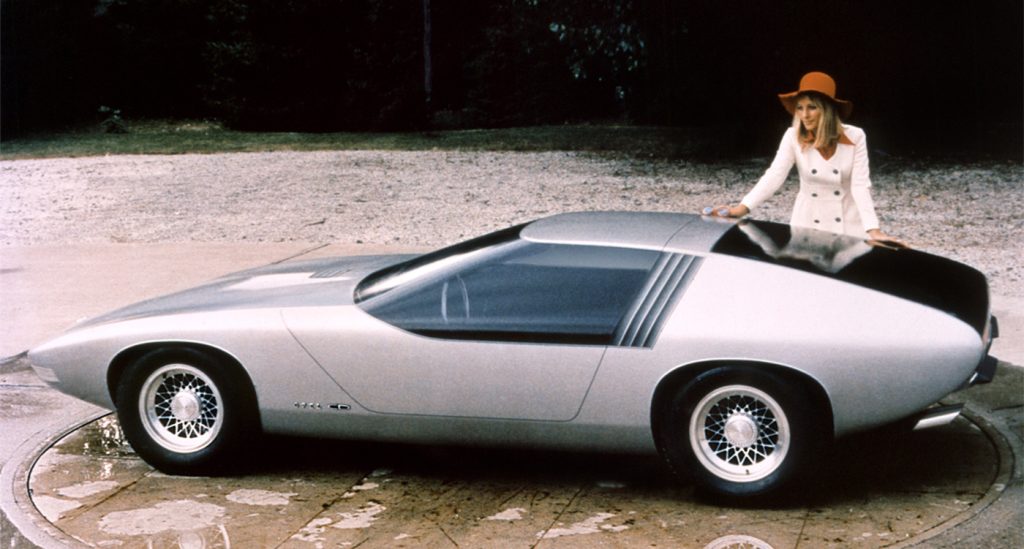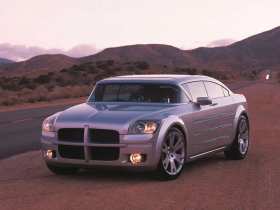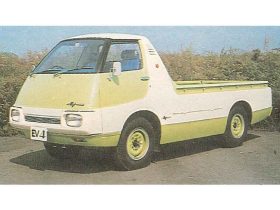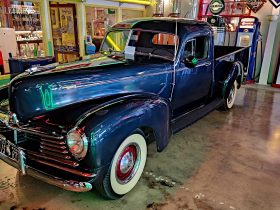In the 1960s and into the 1970s, vehicle design was changing rapidly. During that time, the most innovative designs were considered those being made in Italy and the supercar revolution was becoming fast paced. Not to be outdone, other European makes like Mercedes-Benz and Aston Martin were putting forth their best work to compete.
General Motors’ affiliate Opel, whose design studio was in Russelsheim, Germany at the time, wasn’t considered a supercar contender. After all, the brand, as well as most affiliated American brands of the period, was more well known for making day-to-day rides. Not supercars.
But then Opel came out with the Coupé Diplomat at the Frankfurt auto show in 1969, outclassing the other German concepts that year and stealing the spotlight. It didn’t hurt that Opel was an extreme underdog in the super concept arena.
The Opel Coupé Diplomat concept followed on the 1965 Experimental GT, which had been based on the Corvette as a potential European halo car for the company. Unlike the GT, however, Opel’s Coupé Diplomat was a totally new, totally unique concept and it stole the Frankfurt show because of that.
Its basis was, of course, the rather staid-looking, but then-new production model Opel Diplomat B, with its 5.4-liter V8 and well-balanced rear-driven chassis. Shortening the wheelbase some and completely redesigning the bodywork, though, made for a dynamic and show-stopping car.
Much of the credit for the Coupé Diplomat comes from Opel’s then director of design George Gallion, with some push by his GM boss Chuck Jordan. Gallion was brand new and ready to impress. And boy did he.

Gallion and his team designed the concept with sleek lines and a unique glass canopy, which opened forward in a single piece. Its lack of A pillars for an uninterrupted forward greenhouse and strong rear deck promised beautiful air cutting and vehicle balance.
The Opel Coupé Diplomat received a great reception at Frankfurt, where it appeared in candy red with wire-spoked wheels with wide center caps. It was later repainted in sheet metal gray (shown above) with some details added. It continued making the European auto circuit.
The concept was so impressive that GM’s Pietro Frua worked to develop production-realistic prototypes of the car. The windscreen was replaced with a standard flat and the side windows were made to roll up and down in standard swing-out doors. The car was slimmed somewhat to make for longer-appearing proportions and the roof was flattened slightly to make for better headroom inside. In short, the production-ready model was nothing like the concept except in general overall shape. GM couldn’t justify the costs to make the car, however, and the project appeared to have died on the vine.
Then race driver Erich Bitter jumped on board and created a new company to market the Coupé Diplomat, subcontracting production and assembly to Baur. Bitter licensed the Diplomat’s innards and was given the OK to use the Coupé Diplomat’s design language. The new version was brought to market in 1973 as the Bitter CD and did reasonably well, given the oil crisis and other economic issues of the time, as a limited-production grand tourer. This production version of the Coupé Diplomat is now considered a very collectible car in Europe.
Meanwhile, the Opel Coupé Diplomat remains in GM’s history as a concept that took the European automotive world by storm.







